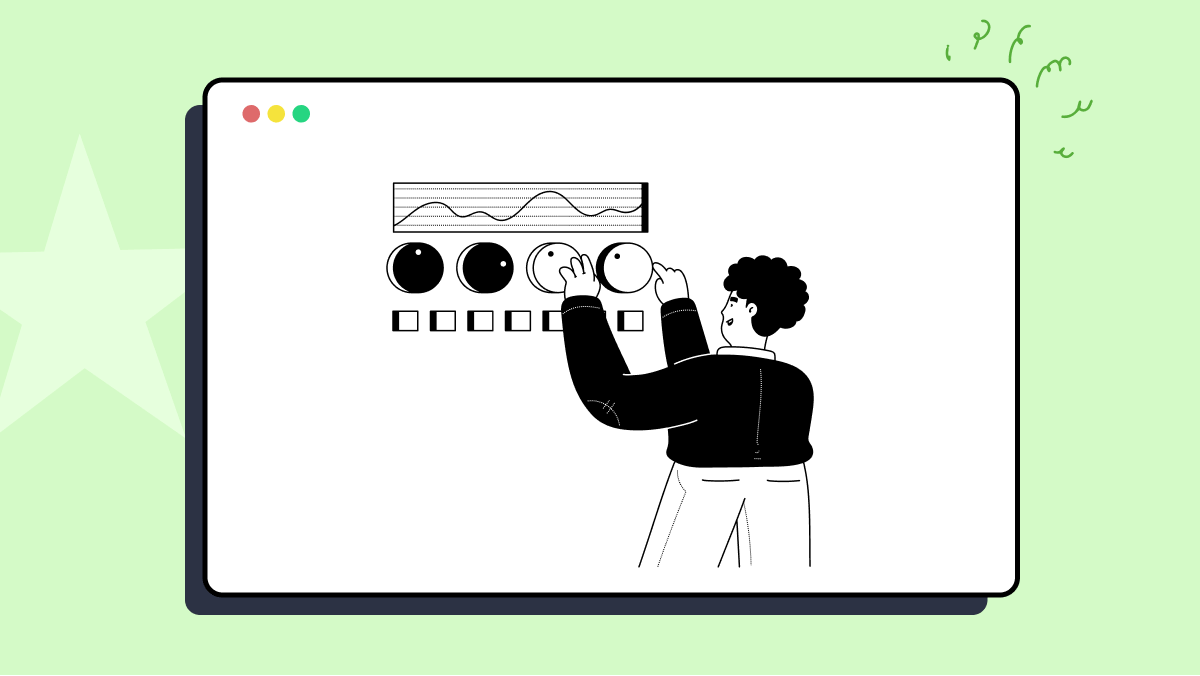How to use init method of org.cerberus.websocket.encoders.TestCaseExecutionEncoder class
Best Cerberus-source code snippet using org.cerberus.websocket.encoders.TestCaseExecutionEncoder.init
Source: TestCaseExecutionEncoder.java
...34 public String encode(TestCaseExecution testCaseExecution) throws EncodeException {35 return testCaseExecution.toJson(true).toString();36 }37 @Override38 public void init(EndpointConfig endpointConfig) {39 }40 @Override41 public void destroy() {42 }43}...init
Using AI Code Generation
1import org.cerberus.websocket.encoders.TestCaseExecutionEncoder;2import org.cerberus.websocket.encoders.TestCaseExecutionEncoder;3import org.cerberus.websocket.encoders.TestCaseExecutionEncoder;4import javax.websocket.EncodeException;5import javax.websocket.Encoder;6import javax.websocket.EndpointConfig;7import java.io.IOException;8import java.util.logging.Level;9import java.util.logging.Logger;10public class TestCaseExecutionEncoder implements Encoder.Text<TestCaseExecution> {11 private static final Logger LOG = Logger.getLogger(TestCaseExecutionEncoder.class.getName());12 public String encode(TestCaseExecution object) throws EncodeException {13 try {14 return object.toJson();15 } catch (IOException ex) {16 LOG.log(Level.SEVERE, null, ex);17 throw new EncodeException(object, "Unable to encode object", ex);18 }19 }20 public void init(EndpointConfig config) {21 }22 public void destroy() {23 }24}init
Using AI Code Generation
1@ServerEndpoint(value = "/websocket/testCaseExecution", encoders = {TestCaseExecutionEncoder.class})2public class TestCaseExecutionServerEndpoint {3 private static final Logger LOG = Logger.getLogger(TestCaseExecutionServerEndpoint.class.getName());4 private static final Set<Session> sessions = Collections.synchronizedSet(new HashSet<Session>());5 public void onOpen(Session session) {6 LOG.log(Level.INFO, "Session opened: {0}", session.getId());7 sessions.add(session);8 }9 public void onClose(Session session) {10 LOG.log(Level.INFO, "Session closed: {0}", session.getId());11 sessions.remove(session);12 }13 public void onError(Throwable error) {14 LOG.log(Level.SEVERE, "Error: {0}", error);15 }16 public void onMessage(String message, Session session) {17 LOG.log(Level.INFO, "Message received: {0}", message);18 try {19 session.getBasicRemote().sendText(message);20 } catch (IOException ex) {21 LOG.log(Level.SEVERE, "Error: {0}", ex);22 }23 }24 public static void broadcastMessage(TestCaseExecution tCExecution) {25 for (Session session : sessions) {26 try {27 session.getBasicRemote().sendObject(tCExecution);28 } catch (IOException | EncodeException ex) {29 LOG.log(Level.SEVERE, "Error: {0}", ex);30 }31 }32 }33}34public class TestCaseExecutionEncoder implements Encoder.Text<TestCaseExecution> {35 public String encode(TestCaseExecution tCExecution) throws EncodeException {36 return new Gson().toJson(tCExecution);37 }38 public void init(EndpointConfig config) {39 }40 public void destroy() {41 }42}43public class TestCaseExecutionEncoder implements Encoder.TextStream<TestCaseExecution> {44 public void encode(TestCaseExecution tCExecution, Writer writer) throws EncodeException, IOException {45 writer.write(new Gson().toJson(tCExecution));46 }init
Using AI Code Generation
1public class TestCaseExecutionDecoder extends Decoder.TextStream<TestCaseExecution> {2 private static final Logger LOG = Logger.getLogger(TestCaseExecutionDecoder.class.getName());3 public void init(EndpointConfig config) {4 LOG.log(Level.INFO, "init");5 }6 public void destroy() {7 LOG.log(Level.INFO, "destroy");8 }9 public TestCaseExecution decode(InputStream is) throws DecodeException, IOException {10 LOG.log(Level.INFO, "decode");11 TestCaseExecution tce = null;12 try (ObjectInputStream ois = new ObjectInputStream(is)) {13 tce = (TestCaseExecution) ois.readObject();14 } catch (ClassNotFoundException ex) {15 LOG.log(Level.SEVERE, null, ex);16 }17 return tce;18 }19}20package org.cerberus.websocket.encoders;21import java.io.IOException;22import java.io.OutputStream;23import java.io.ObjectOutputStream;24import java.util.logging.Level;25import java.util.logging.Logger;26import javax.websocket.EncodeException;27import javax.websocket.Encoder;28import javax.websocket.EndpointConfig;29import org.cerberus.websocket.pojo.TestCaseExecution;30public class TestCaseExecutionEncoder implements Encoder.TextStream<TestCaseExecution> {31 private static final Logger LOG = Logger.getLogger(TestCaseExecutionEncoder.class.getName());32 public void init(EndpointConfig config) {33 LOG.log(Level.INFO, "init");34 }35 public void destroy() {36 LOG.log(Level.INFO, "destroy");37 }38 public void encode(TestCaseExecution tce, OutputStream os) throws EncodeException, IOException {39 LOG.log(Level.INFO, "encode");40 try (ObjectOutputStream oos = new ObjectOutputStream(os)) {41 oos.writeObject(tce);42 }43 }44}45package org.cerberus.websocket.endpoints;46import java.io.IOException;47import java.util.HashSet;48import java.util.Set;49import java.util.logging.Level;50import java.util.logging.Logger;51import javax.websocket.CloseReason;52import javax.websocket.Endpoint;53import javax.websocket.EndpointConfig;54import javax.websocket.Messageinit
Using AI Code Generation
1public class TestCaseExecutionEncoder implements Encoder.TextStream<TestCaseExecution> {2 private static final Logger LOG = LogManager.getLogger(TestCaseExecutionEncoder.class);3 public void encode(TestCaseExecution object, Writer writer) throws EncodeException, IOException {4 writer.write(new Gson().toJson(object));5 }6 public void init(EndpointConfig config) {7 }8 public void destroy() {9 }10}11public class TestCaseExecutionEncoder implements Encoder.TextStream<TestCaseExecution> {12 private static final Logger LOG = LogManager.getLogger(TestCaseExecutionEncoder.class);13 public void encode(TestCaseExecution object, Writer writer) throws EncodeException, IOException {14 writer.write(new Gson().toJson(object));15 }16 public void init(EndpointConfig config) {17 }18 public void destroy() {19 }20}21WebSocketClient client = new WebSocketClient();22client.start();23socket.getRemote().sendString("Hello World");24WebSocketClient client = new WebSocketClient();25client.start();26socket.getRemote().sendString("Hello World");27WebSocketClient client = new WebSocketClient();28client.start();29socket.getRemote().sendString("Hello World");30WebSocketClient client = new WebSocketClient();31client.start();32socket.getRemote().sendString("Hello World");33WebSocketClient client = new WebSocketClient();34client.start();35WebSocket socket = client.connect(new MyClientSocket(), URIinit
Using AI Code Generation
1@ServerEndpoint(value = "/notifications", encoders = {TestCaseExecutionEncoder.class})2public class Notifications {3}4ws.onmessage = function (event) {5 var testCaseExecution = JSON.parse(event.data);6 console.log(testCaseExecution);7};Blogs
Check out the latest blogs from LambdaTest on this topic:
Estimates are critical if you want to be successful with projects. If you begin with a bad estimating approach, the project will almost certainly fail. To produce a much more promising estimate, direct each estimation-process issue toward a repeatable standard process. A smart approach reduces the degree of uncertainty. When dealing with presales phases, having the most precise estimation findings can assist you to deal with the project plan. This also helps the process to function more successfully, especially when faced with tight schedules and the danger of deviation.
Enterprise resource planning (ERP) is a form of business process management software—typically a suite of integrated applications—that assists a company in managing its operations, interpreting data, and automating various back-office processes. The introduction of a new ERP system is analogous to the introduction of a new product into the market. If the product is not handled appropriately, it will fail, resulting in significant losses for the business. Most significantly, the employees’ time, effort, and morale would suffer as a result of the procedure.
One of the essential parts when performing automated UI testing, whether using Selenium or another framework, is identifying the correct web elements the tests will interact with. However, if the web elements are not located correctly, you might get NoSuchElementException in Selenium. This would cause a false negative result because we won’t get to the actual functionality check. Instead, our test will fail simply because it failed to interact with the correct element.
Have you ever visited a website that only has plain text and images? Most probably, no. It’s because such websites do not exist now. But there was a time when websites only had plain text and images with almost no styling. For the longest time, websites did not focus on user experience. For instance, this is how eBay’s homepage looked in 1999.
Automation Testing Tutorials
Learn to execute automation testing from scratch with LambdaTest Learning Hub. Right from setting up the prerequisites to run your first automation test, to following best practices and diving deeper into advanced test scenarios. LambdaTest Learning Hubs compile a list of step-by-step guides to help you be proficient with different test automation frameworks i.e. Selenium, Cypress, TestNG etc.
LambdaTest Learning Hubs:
- JUnit Tutorial
- TestNG Tutorial
- Webdriver Tutorial
- WebDriverIO Tutorial
- Protractor Tutorial
- Selenium 4 Tutorial
- Jenkins Tutorial
- NUnit Tutorial
- Jest Tutorial
- Playwright Tutorial
- Cypress Tutorial
- PyTest Tutorial
YouTube
You could also refer to video tutorials over LambdaTest YouTube channel to get step by step demonstration from industry experts.
Try LambdaTest Now !!
Get 100 minutes of automation test minutes FREE!!



